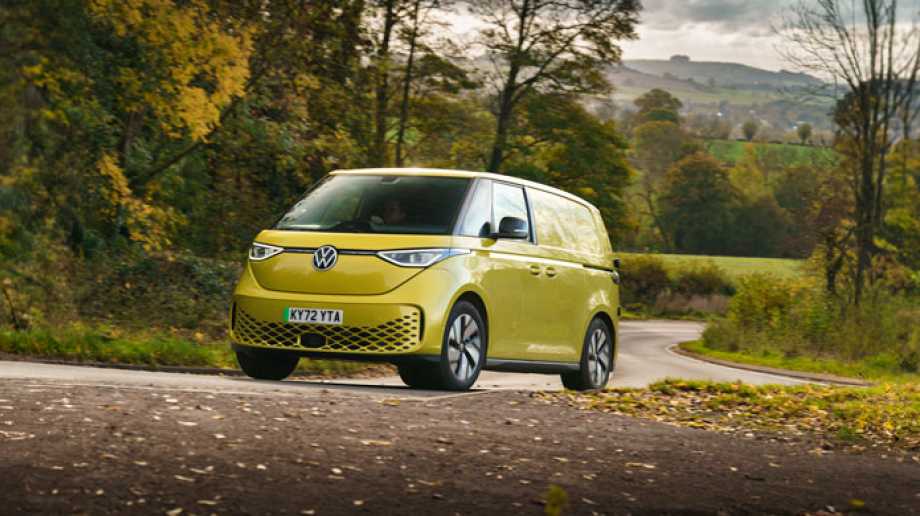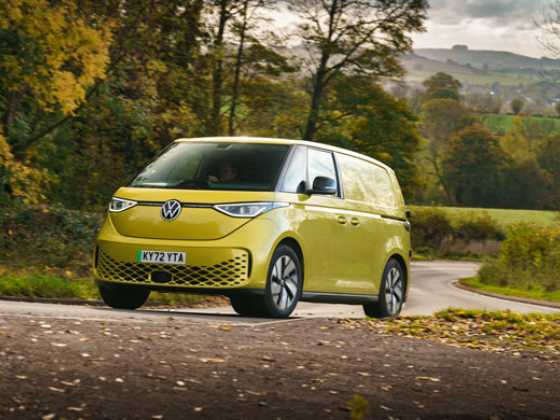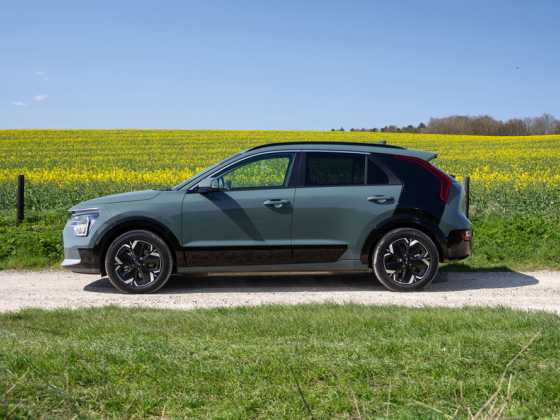First Drive: Volkswagen ID Buzz Cargo

The ID Buzz is Volkswagen’s first commercial vehicle built on its Modular Electric Drive Kit (MEB) platform which underpins the ID passenger car family, and Richard Gooding discovers style, range and refinement to match.
What is it?
Named International Van Of The Year 2023, the ID Buzz has been built from the ground up as an EV and draws on design cues from Volkswagen’s iconic 1949 T1 panel van. Shortlisted for the 2023 GreenFleet Vehicle of the Year award, it is available in both passenger MPV and commercial vehicle (Cargo) versions.
How practical is it?
For now, just one short wheelbase – 2,989mm – ID Buzz Cargo is available. Overall length is 4,712mm, height is 1,937mm and width is 2,211mm. Overall load compartment volume is 3.9m3, the 3.2m2 load area suitable for two Euro pallets. Access is by sliding doors on both vehicle sides – electric operation is available – or by two rear wing doors. Load floor length is 2,232mm with the wing doors, and 2,208mm with the no-cost tailgate option.
Other features include LED load compartment lighting, a wooden load floor covering, lashing rings and a fixed bulkhead, also available with through loading and with or without a fixed window. A driver’s seat and two-person passenger bench seat are standard but a pair of regular seats can be chosen, along with the £180 optional and removable Buzz Box centre console, which increases the amount of storage available.
What range does it have?
Volkswagen sells the ID Buzz Cargo in two trims – Commerce and Commerce Plus. Both share the same 150kW electric motor and 77kWh lithium-ion battery. Official WLTP combined cycle range for the Commerce is up to 254 miles, dropping to up to 252 miles for the Commerce Plus.
How long does it take to charge?
Keeping downtime to a minimum, the ID Buzz Cargo is capable of DC charging at up to 170kW. This gives a five to 80 per cent battery charge in around 30 minutes. When connected to a 7kW wallbox, a 0-100 per cent charge will be complete in 11 hours, while an 11kW AC socket drops this to seven hours and 30 minutes.
How does it drive?
Volkswagen has pleasingly reinvented the looks of its T1 for the modern age. The ID Buzz Cargo cuts a dash, and although its simply styled interior with its dark finishes is more sombre than its MPV sister, it suits the van’s purpose better. Digital screens ahead of the driver and in the centre of the dashboard will be familiar to drivers who have spent time in the ID passenger cars, and lots of in-dash storage boosts practicality.
The 150kW rear-mounted motor provides more than enough get up and go for urban and motorway trips, and on the move, the electric VW van is as quiet as a car. A single ‘B’ gear setting adds stronger brake regeneration but there is no one-pedal option, a shame given the ID Buzz Cargo will spend lots of time in urban areas. However, the steering is light and the 11.1m turning circle aids manoeuvrability. The Buzz handles nicely, too, with little roll.
What does it cost?
Including VAT, but minus the UK government’s plug-in van grant (PIVG), the ID Buzz Cargo Commerce is priced from £48,541 ‘on the road’ (OTR). Standard equipment highlights include a 10-inch touchscreen with Android Auto and Apple CarPlay connectivity, an alarm, cruise control, front and rear parking sensors and heated seats. Befitting its entry level status, the bumpers are not painted; a paint finish costs £126.
Move up to the £53,641 Commerce Plus, and you’ll gain those painted bumpers, adaptive cruise control, a navigation system, and a rear view camera. Candy White is the only no-cost colour on both models; metallic paint is £1,035. If you want that iconic retro T1 look, a two-tone finish costs an extra £2,790. Steel wheels are standard; 19-inch alloy wheels are £2,610.
Why does my fleet need one?
Possessed with a characterful exterior, a quiet and punchy drivetrain, and even though it loses out to some competitors on carrying capacity, the ID Buzz Cargo has lots to recommend it. Its head-turning style will immediately win over some fleet drivers, but build and refinement more in line with cars than vans should, too. VW’s electric CV may be more of an emotional choice than other eLCVs, but that doesn’t make it any less compelling.









